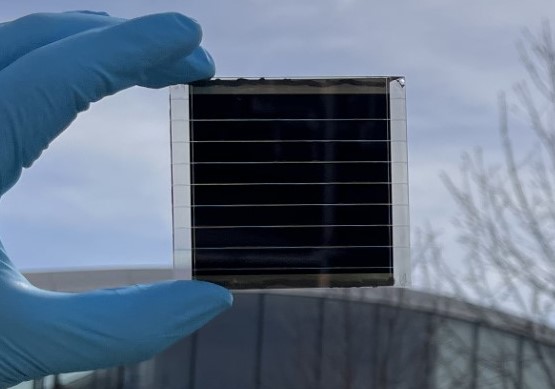The solar panels are based on the record-breaking 25.32% efficient 2D/3D perovskite solar cells that the Ecole Polytechnique Fédérale de Lausanne unveiled in July 2023. The panel has an opening area of 27.22 cm2 and is encapsulated by glass-glass encapsulation. technology combined with an edge seal of the module under UV light illumination.
An international group of scientists led by the Ecole Polytechnique Federale de Lausanne (EPFL) in Switzerland has developed a solar panel that uses the record-breaking 25.32% efficient 2D/3D perovskite solar cells that it unveiled in July 2023.
“Our new research shows a larger surface area of 27.22 cm2, achieving an impressive efficiency of 23.3%,” said the study’s lead author Mohammad Khaja Nazeeruddin. pv magazine. “This brings us one step closer to commercializing this breakthrough technology and marks a significant advancement in the field of perovskite solar cells.”
In the newspaper “Synergism between dopant and additive improves perovskite solar panels,” published in natureNazeeruddin and his colleagues explained that the high efficiency of the module was achieved thanks to a synergistic combination strategy of dopant and additive, aimed at improving the uniformity and crystallinity of the cell absorber. In particular, they used methylammonium chloride (MACl) as a dopant and a Lewis basic ionic liquid known as 1,3-bis(cyanomethyl)imidazolium chloride ([Bcmim]Cl) as an additive.
“This strategy effectively inhibits the degradation of the perovskite precursor solution (PPS), suppresses the aggregation of MACl and results in phase-homogeneous and stable perovskite films with high crystallinity and fewer defects,” the research team said.
The panel uses a cell from which a substrate is made tin oxide (FTO), an electron transport layer made of titanium oxide (TiO2) and tin(IV) oxide (SnO2), a 3D perovskite layer, a 2D perovskite layer, a spiro-OMeTAD hole transport layer, and a metal contact based on gold (Au). The cell uses a 2D perovskite layer at the interface between the perovskite and hole transport layers, which the researchers said can improve charge carrier transport/extraction while suppressing ion migration.
The modules are encapsulated using glass-glass encapsulation technology combined with edge sealing of the module under UV light illumination.
Tested under standard lighting conditions, the panels achieved a certified efficiency of 23.30% and a stabilized efficiency of 22.97% over a distance of 27.22 cm.2 aperture area. According to the research group, this is the highest efficiency ever measured for a perovskite solar panel of this size. “Additionally, the perovskite solar panels showed long-term operational stability, retaining 94.66% of initial efficiency after 1,000 hours under continuous illumination from one sun at room temperature,” it added.
The scientists believe that this module technology can be converted into large-scale production and lead to the commercialization of perovskite-based photovoltaic technologies.
The research group also included academics from the Chinese Academy of Sciences, Southern University of Science and Technology, Xi’an Jiaotong University and Soochow University in China, as well as Lomonosov Moscow State University in Russia, Luxembourg Institute of Science. and Technology (LIST), Germany’s Julius Maximilian University of Würzburg, and Toin University of Yokohama in Japan.
This content is copyrighted and may not be reused. If you would like to collaborate with us and reuse some of our content, please contact: editors@pv-magazine.com.


